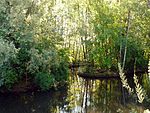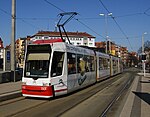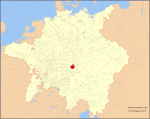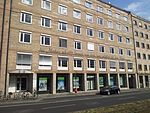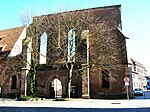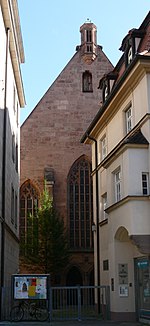Kicker Statue

The Kicker Statue is a sculpture created by sculptor Josef Tabachnyk. It stands in front of the new building of the Kicker sport magazine at Badstraße in Nuremberg. It depicts a football player performing a bicycle kick, where the player performs a kick of the ball with his foot above his head. The statue was erected on 22 May 2014 and Toni Schnell (business leader of the Olympia Publishing House), Josef Tabachnyk and numerous employees of the Kicker sport magazine were present. The green granite symbolises the football field, the k is the logo of the magazine Kicker. After overcoming the earth’s gravity, the dynamic figure of the football player The Bicycle Kicker floats in the air.The measurements of the statue are 320x200x140 cm.According to Josef Tabachnyk the ball rises to the peak of the foot, as it is above all "a symbol of the spirit of sport, the passion for the beauty of the game, the love of millions for this sport".
Excerpt from the Wikipedia article Kicker Statue (License: CC BY-SA 3.0, Authors, Images).Kicker Statue
Badstraße, Nuremberg Galgenhof
Geographical coordinates (GPS) Address Nearby Places Show on map
Geographical coordinates (GPS)
| Latitude | Longitude |
|---|---|
| N 49.4491 ° | E 11.087 ° |
Address
Badstraße 6
90402 Nuremberg, Galgenhof
Bavaria, Germany
Open on Google Maps
